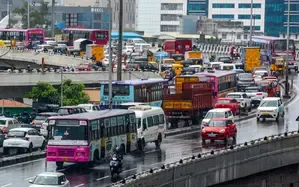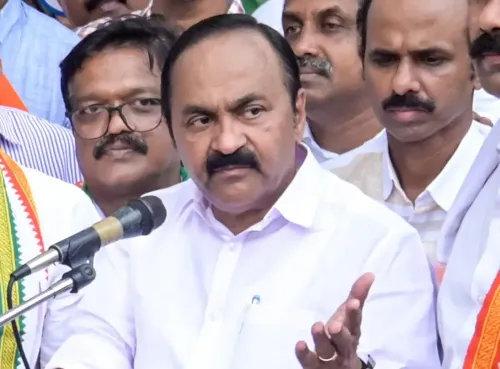Is Chennai Ready to Transform Traffic Management with AI?

Synopsis
Key Takeaways
- Chennai is installing AI-powered adaptive traffic signals at 165 junctions.
- The system will adjust green light timings based on real-time traffic data.
- Initial pilot tests have shown promising results in reducing congestion.
- Centralized coordination will enhance traffic management across major corridors.
- Experts emphasize the need for reliable data to ensure system effectiveness.
Chennai, Aug 5 (NationPress) In a groundbreaking effort to enhance urban mobility, the city of Chennai is embarking on a significant upgrade to its traffic management framework by deploying AI-driven adaptive traffic signals at 165 junctions on essential arterial routes.
This innovative system will adjust green light durations in real-time, responding to traffic congestion levels, with the goal of minimizing wait times and optimizing traffic movement.
In contrast to the existing fixed signal timings of 60-90 seconds, this adaptive setup will tailor green light durations based on vehicle density at every approach. Heavily trafficked areas could see green lights extended to 120 seconds, while less busy routes may have their cycles shortened to as little as 30 seconds to prevent unnecessary delays.
The initial phase of this implementation will target major thoroughfares, including Anna Salai, Jawaharlal Nehru Salai, Sardar Patel Road, Kamarajar Salai, Rajaji Salai, and Taylors Road.
Six pilot junctions on EVR Salai, including the intersections at Vepery and Ega Theatre, are currently testing the new technology with promising initial results.
“We’re observing significant reductions in queue lengths during peak times and quicker clearance,” remarked Bandi Gangadhar, Joint Commissioner of Police (Traffic East).
Each adaptive junction will consist of three key components: sensors that monitor vehicle speed and travel time, AI-enabled cameras that count vehicles and identify their types, and a control unit that processes this data to promptly adjust signal timings according to real-time conditions.
This localized decision-making will be enhanced by a centralized system. Real-time data from each junction will be sent to the Greater Chennai Traffic Police headquarters in Vepery to synchronize signal timings across all corridors. This approach will facilitate the establishment of green corridors — sequences of green lights along significant stretches like EVR Salai, ensuring uninterrupted traffic flow and minimizing stops.
The system employs a blend of live video feeds and historical traffic data to predict congestion and proactively modify signal phases. While fully automated, it also has manual override options, allowing traffic authorities to intervene remotely during emergencies, such as for ambulances or VIP convoys.
“The installation of sensors and AI cameras is currently in progress and is expected to be completed in the upcoming months,” confirmed Gangadhar.
Nevertheless, experts caution that the system’s success depends on reliable and accurate data. “We’ve seen international cases where sensor or camera malfunctions impeded traffic,” stated R. Rajmurugan, a transportation engineer, citing failures in cities like Melbourne, Pittsburgh, and London.
Chennai’s initiative towards smart mobility is part of a broader urban modernization agenda and, if successful, could serve as a model for other Indian cities grappling with persistent traffic challenges.










